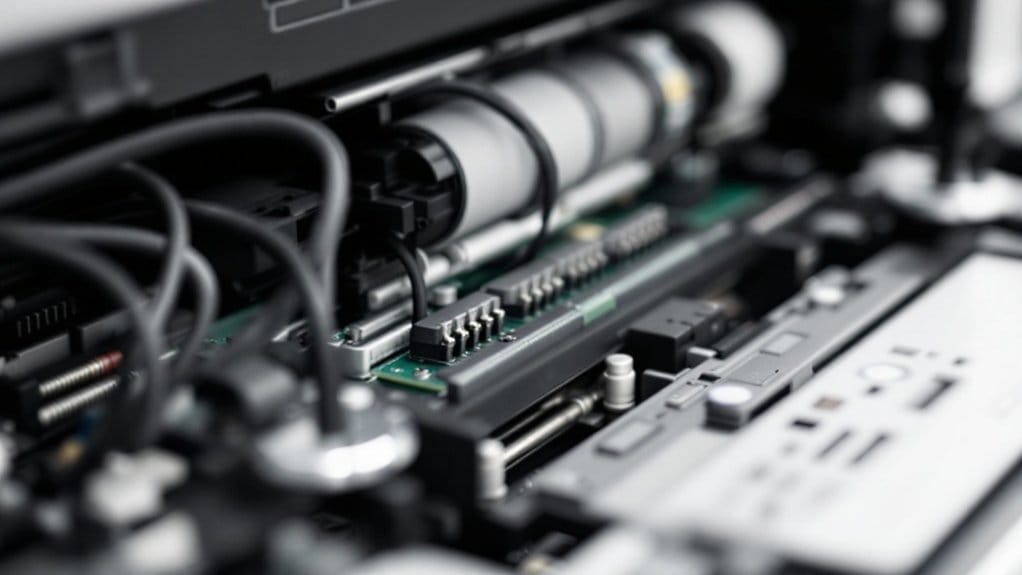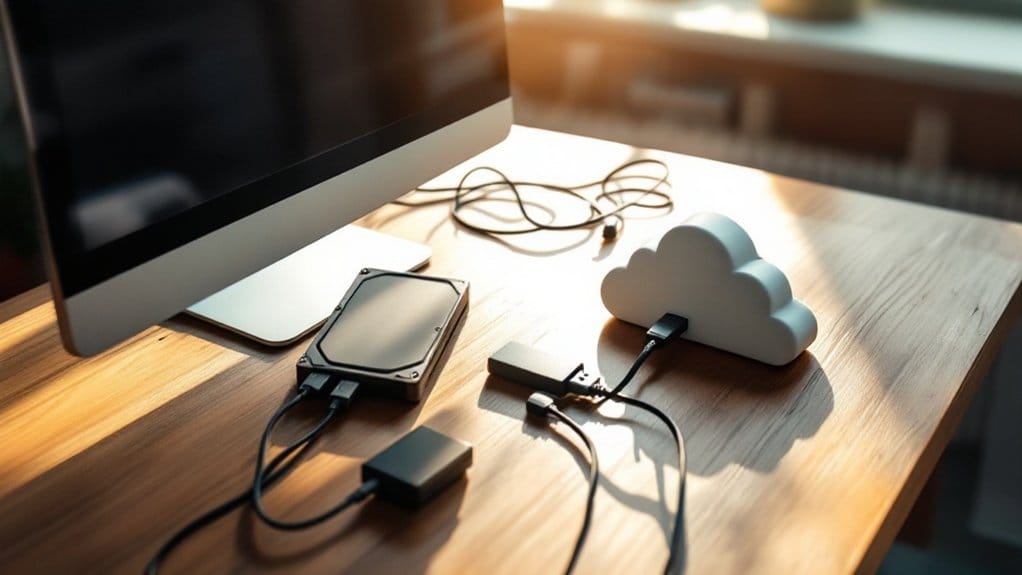You often face printer woes like paper jams or connectivity glitches, but don’t worry—simple fixes are at hand. You’ll learn how to resolve these issues and enhance your setup, so stick around for practical tips that make a real difference.
Fixing Paper Jams
Paper jams can stop your printer dead in its tracks, but you’ll fix them easily.
Paper jams can halt your printer in its tracks, but fixing them is simple.
First, turn off the printer and unplug it for safety.
Open the paper tray and inspect for stuck sheets.
Gently pull out any jammed paper, moving in the direction of the paper path to avoid tears.
If paper is inside the printer, lift the access cover and remove it carefully, using both hands for control.
Check for tiny paper fragments that might remain, as they cause future jams.
Reload paper straight and even, ensuring it isn’t overfilled.
Close all covers securely, plug in the printer, and turn it on.
Run a test print to confirm it’s working.
Remember, regular maintenance like cleaning rollers prevents these issues.
Always refer to your printer’s manual for model-specific advice.
You’ll be back to printing smoothly in no time.
Resolving Connectivity Issues
After fixing paper jams, you might run into connectivity problems that stop your printer from linking to your computer or network.
First, check your connections: make sure USB cables are secure or that your printer is on the same Wi-Fi network.
Restart both your printer and computer to refresh the link—this often resolves glitches.
If you’re using wireless, verify the printer’s IP address matches your network settings via the control panel.
Update your printer drivers from the manufacturer’s website, as outdated software can cause issues.
Test with a simple print job to confirm.
If problems persist, disable firewalls or antivirus temporarily to rule out interference, then re-enable them.
Always power cycle your router for network-related hiccups.
These steps keep your setup running smoothly without delving into print quality tweaks.
Improving Print Quality
Even if you’ve resolved connectivity issues, poor print quality can still frustrate your efforts—how can you get sharp, vibrant results every time?
Start by checking your printer’s settings; select a higher resolution in the software driver to boost detail.
Make sure you’re using the correct paper type, as mismatched stock often causes smudges or fading.
Regularly clean the printer’s exterior and rollers with a soft cloth to remove dust, which can blur prints.
Update your printer’s firmware through the manufacturer’s website for better performance tweaks.
Test prints from different applications to isolate software glitches, and calibrate color settings if available.
Always preview documents before printing to catch errors early.
Managing Ink and Toner Problems
Ink and toner problems can quickly derail your printing tasks, so start by monitoring levels through the printer’s dashboard to catch shortages early.
You’ll avoid unexpected halts by regularly checking ink or toner status on your device’s control panel.
If levels are low, purchase compatible cartridges and replace them promptly—power off your printer first, then gently remove the old ones and insert the new.
Don’t ignore error messages; they often signal clogs or empty cartridges.
For clogs, run a cleaning cycle via the printer’s menu to restore flow.
To conserve ink, adjust print settings to draft mode or grayscale for less critical jobs.
Always store spares in a cool, dry place to prevent drying out.
Test prints after changes to verify smooth operation, keeping your workflow uninterrupted.
Updating Printer Drivers and Software
Keeping your printer’s drivers and software updated is essential for smooth operation and avoiding compatibility issues.
You’ll prevent glitches, enhance performance, and guarantee your device works with the latest operating systems.
Outdated drivers can cause errors, so regularly checking for updates keeps everything running efficiently.
- Visit your printer manufacturer’s website to download the latest drivers for your model.
- Use your computer’s device manager to check for available updates and install them directly.
- Enable automatic updates in your printer’s software settings if available.
- Restart your printer and computer after installing new drivers to apply changes.
- Test your printer with a sample print job to confirm the updates resolved any issues.
Conclusion
To sum up, you’ve now got the tools to tackle printer woes head-on, from clearing paper jams to fixing connectivity, boosting print quality, managing ink issues, and updating drivers. By applying these simple fixes, you’ll keep things running smoothly and avoid future frustrations. Remember, quick action and regular maintenance make all the difference, so stay proactive and enjoy hassle-free printing every time.








